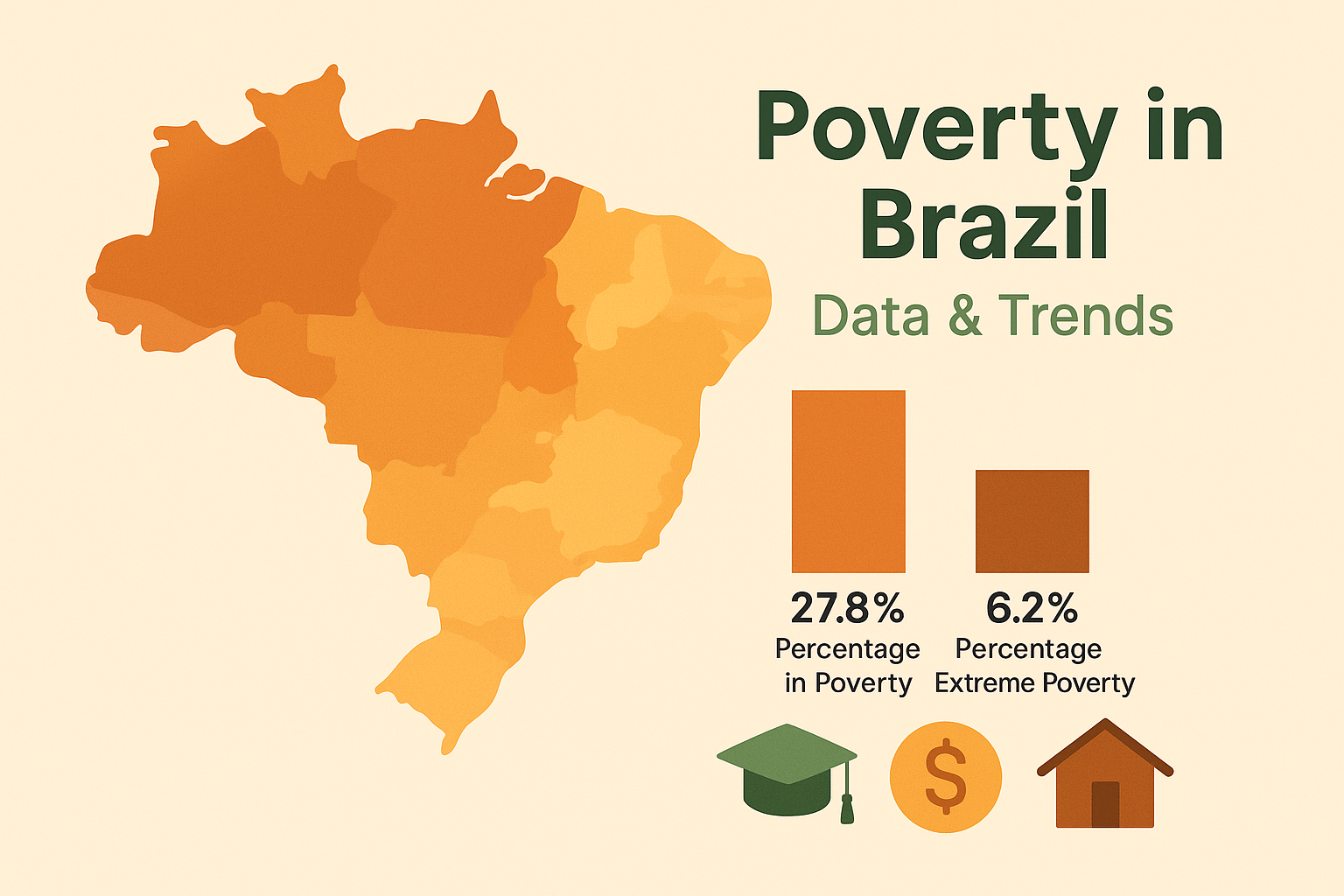Brazil is known for its music, beaches, and Carnival. But did you know it’s also home to a diverse mix of languages?
In this article, we’ll break down:
- The most spoken languages in Brazil by percentage
- Regional and indigenous language trends
- Surprising facts about multilingual communities in Brazil
Whether you’re researching, learning Portuguese, or just curious—this guide covers it all.
What Is the Official Language of Brazil?
Let’s start with the basics.
The official and national language of Brazil is:
👉 Portuguese
Not Spanish. Not English. Portuguese is spoken by nearly the entire population.
But that’s not the full story.
Brazil is also home to:
- Indigenous languages
- Immigrant languages
- Regional dialects and accents
Languages Spoken in Brazil by Percentage (2025 Estimate)
Here’s a breakdown of the most common languages spoken in Brazil today:
| Language | Estimated % of Population |
|---|---|
| Portuguese | 97.9% |
| German (Hunsrik, Standard) | 1.9% |
| Indigenous languages | 0.5% |
| Spanish | 0.4% |
| Italian (Talian) | 0.2% |
| English | 0.1% |
| Japanese | 0.1% |
| Others | 0.1% |
Note: Many Brazilians speak more than one language.
Portuguese – The Language of Brazil
Nearly 98% of Brazilians speak Portuguese as their first or second language.
But Brazilian Portuguese is different from Portugal’s Portuguese.
It has its own:
- Accent
- Vocabulary
- Slang
- Rhythm
Brazilian Portuguese is considered softer, more musical, and often easier to understand for learners.
German – The Largest Minority Language
Yes, German is the most spoken non-Portuguese language in Brazil!
Thanks to German immigration in the 1800s, today:
- About 1.9% of Brazilians speak German or German-based dialects
- Hunsrik (Riograndenser Hunsrückisch) is a popular dialect
- Southern states like Santa Catarina, Rio Grande do Sul, and Paraná have strong German-speaking communities
Some towns even offer bilingual education in German and Portuguese.
Indigenous Languages – Brazil’s Native Voices
Brazil has over 270 indigenous languages still spoken today.
These are mainly found in:
- The Amazon region
- Rural indigenous communities
While small in numbers (about 0.5% of the population), these languages are culturally significant.
Popular ones include:
- Guarani
- Ticuna
- Yanomami
- Nheengatu
Some indigenous languages are at risk of extinction, but efforts are underway to preserve them through education and documentation.
Spanish – The Neighbor’s Language
Brazil borders 10 Spanish-speaking countries, but surprisingly:
- Only 0.4% of Brazilians speak Spanish fluently
- Many study it in school but aren’t fluent
That said, Spanish is becoming more common in:
- Border regions (like near Argentina or Paraguay)
- Business and tourism sectors
Italian – The “Talian” Dialect
Like German, Italian arrived with European immigrants in the late 1800s.
Today:
- Around 0.2% of Brazilians speak Talian, a Venetian-based dialect
- Most live in Rio Grande do Sul and Santa Catarina
The language is officially recognized as part of Brazil’s cultural heritage.
English – A Global Skill, Not a Native Tongue
English is widely taught in schools—but fluency is limited.
Only about 1 in 1,000 Brazilians (0.1%) speak fluent English at home.
However, English is common in:
- Big cities (São Paulo, Rio)
- Tech and tourism industries
- Private schools and universities
It’s still more of a second language than a spoken home language.
Japanese – Brazil’s Hidden Language
Did you know Brazil has the largest Japanese population outside Japan?
Japanese immigrants settled in São Paulo and Paraná in the 1900s.
Today:
- Around 0.1% of Brazilians still speak Japanese
- Some communities run Japanese schools and language programs
- Words like “obento” and “sensei” are common in Japanese-Brazilian homes
Other Languages Spoken in Brazil
While rare, you’ll also find:
- Arabic: Lebanese and Syrian immigrants
- Polish: In parts of Paraná
- French: Border towns near French Guiana
- Yiddish and Hebrew: In small Jewish communities
These are spoken by a tiny percentage, mostly older generations or immigrants.
Language Use by Region
| Region | Languages Besides Portuguese |
|---|---|
| South | German, Italian (Talian), Polish |
| North (Amazon) | Indigenous languages, Nheengatu |
| Southeast | Japanese, Spanish, English |
| Center-West | Some indigenous languages |
| Border Regions | Spanish, French (near French Guiana) |
Brazil’s language landscape changes depending on the state and local history.
FAQs – Languages Spoken in Brazil
What is the main language spoken in Brazil?
Portuguese—spoken by about 98% of the population.
What percentage of Brazil speaks German?
Around 1.9%, especially in the South.
Are there Spanish speakers in Brazil?
Yes, but only about 0.4% speak it fluently. It’s often learned but not used daily.
What are the top 3 languages spoken in Brazil by percentage?
- Portuguese
- German (Hunsrik & Standard)
- Indigenous languages
Does Brazil have more than one official language?
No. Only Portuguese is official nationally. Some states recognize regional languages like Talian or Nheengatu.
Final Thoughts
Brazil is more than just Portuguese—it’s a linguistic melting pot of cultures, communities, and heritage.
From German towns in the South to indigenous tribes in the Amazon, languages spoken in Brazil by percentage show us how diverse and dynamic the country truly is.
Even if most speak Portuguese, Brazil’s cultural identity goes far beyond one language.

